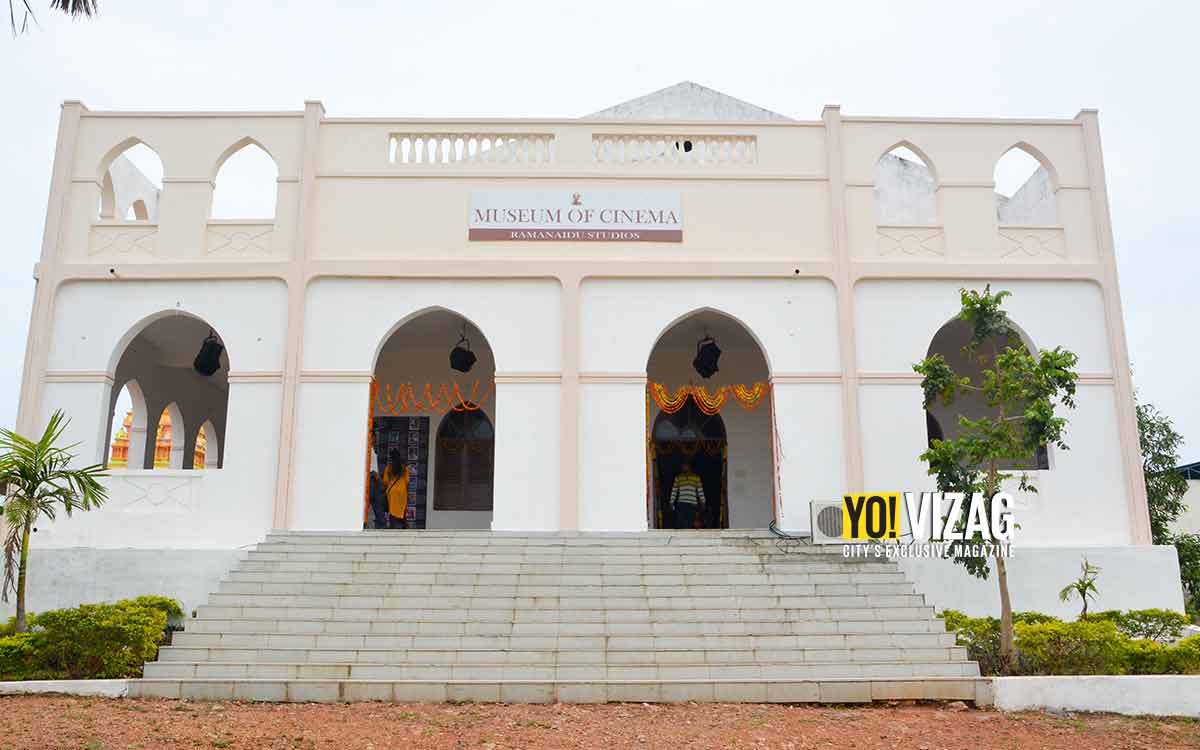
Walking into Dr. Ramanaidu Film Studios in Vizag is like entering multiple film sets at the same time. You see the hospital at one end, a bungalow at the other and a police station by the corner of the road. However, the greatest attraction in this place right now is their newly added ‘Museum of Cinema’. The first of its kind in Andhra Pradesh, this museum was inaugurated on the 79th birth anniversary of Dr. D. Ramanaidu. It showcases the equipment and technologies once prevalent in cinema making. From halogen lights, to the silent camera and advanced versions, video analysers, ultrasonic cleaners, and winders, one is taken on a trip through the laborious task that once cinema making was.
As soon as you walk into the hall, a huge array of equipment catches your eye. A guide patiently tells you that all this equipment is part of the Suresh Production’s legacy of film making. Starting from the camera spotlights at the entrance, he tells how famous stars once shined under its light. The timeless film of Pathala Bhairavi (1951) was shot using this equipment too. Once the movies were shot, came the post-production process, a task that has thankfully transformed with time. What took eight months using this equipment, is now just a matter of 30 days, with most of the technologies digitized. The equipment, showcased at the museum, dates back to the 1960s, the time when colour cinema had entered the market.
Scenes once shot would have to be checked for errors which was tough to do as one meter of the film reel could hold only 3 seconds of cinema. Scenes which did not turn out well had to be reshot, while the redundant ones were simply cut off using blades, and then glued together. The technologies used to do this evolved with time, and as you walk through the hall you can see the various devices and know their purposes. Other popular equipment during those years were the winders used to wind the reel on large spools and ultrasonic cleaners which would keep the reels dust and scratch-free. Perhaps these were the reasons why films made using such elaborate technologies stood the test of time and can be viewed even today. A major pride of place at the museum is occupied by the extremely high-end equipment of the yesteryears.
While all this occupies the ground floor of the two-storied museum, plans to include more fascinating elements in the upper floors are underway. One of these includes viewing documentary films on the journey of film making. Also, costumes, weapons, and shields used in timeless movies of the yesteryears will also soon be on display here. Other ideas also include showcasing film scripts and real-time examples of how movies are processed so that a viewer knows how much time and effort goes into these.
As you walk out of the museum into the lush green environs of Ramanaidu Studios at Rushikonda in Vizag, you’re humbled to understand how detailed the process of film making can be. And how judgemental we become while passing our reviews of ‘good’ or ‘bad’ within three hours of watching a film. It makes you want to dig out some old cinema and watch it again, and this time when you do, you’ll feel a sense of familiarity knowing that you stood under the cameras that shot this film.
This post was last modified on 21/01/2020 3:45 pm
Activists of Osmania University Joint Action Committee (JAC) stormed and attacked the house of Allu…
District Collector M N Harendra Prasad has said that all the officials concerned should work…
It's the end of the week which means no work pressure and ample time to…
Araku Valley and Vanjangi, both the places have their unique fanbases in Visakhapatnam! During winter,…
Vizag is a paradise for food lovers. Every corner of the city has something special…
Rainy days bring with them the perfect excuse to curl up with a cup of…
Leave a Comment